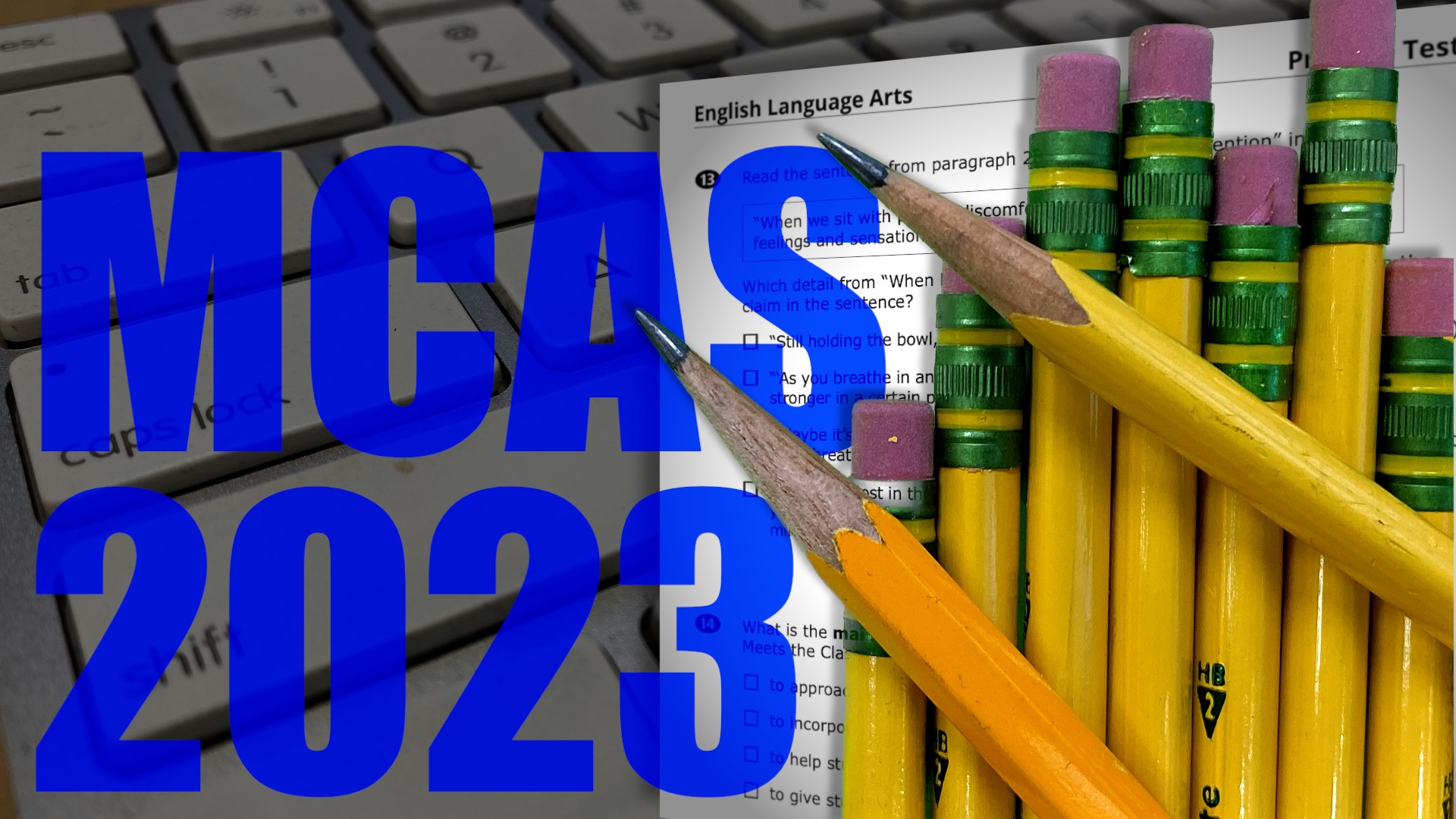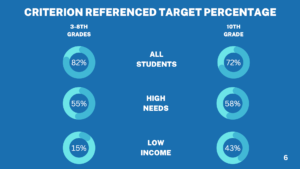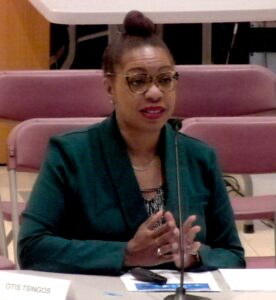
MCAS Scores Signal Needham Still On Road To ‘Recovery’
October 19, 2023
• Chronic absenteeism, underperformance and slow achievement growth plague Needham Public Schools post-pandemic, with low-income students disproportionately affected, according to information shared at Tuesday’s School Committee meeting.
Carmen Williams, Assistant Superintendent for Instruction and Innovation, presented data from the spring’s MCAS exams and reiterated the district’s commitment to restoring achievement scores from 2019.
The district’s accountability score — based on a formula that takes into account student achievement, growth, high school graduation rates, chronic absenteeism and more — came in at 79% in 2023. The Massachusetts Department of Elementary and Secondary Education views a score of 75% or higher as the goal.
But NPS has historically scored higher. In 2019, their accountability score was 86%. Because of that scoring gap, Williams said NPS is “on a recovery path” as opposed to “on a path forward.” They’ll have up to four years to achieve that 86% or higher, she said.

For high needs and low-income students, however, “their achievement rating is very, very different,” Williams said. High needs students ranked in the mid-50s, while just 15% of low-income students in third through eighth grade met those targets. Low-income 10th graders scored at 43% on those same criteria.
“We will continue to deal with the effects of the global pandemic, but we are steady in our recovery efforts,” Williams said.
About 27% of Needham students are identified as high needs, Williams said, which means they’re in special education, require English language assistance or are low-income. Low-income students specifically account for about 8% — or about 450 individuals — of the student body, which is around the size of Eliot Elementary School, Williams said.
Chronic absenteeism
More than 30% of identified low-income students were considered chronically absent in the 2022-2023, according to data Williams shared. While chronic absenteeism across the board has improved since the prior school year, Williams said it has not decreased to 2019 levels. Just over 13% of all students were considered chronically absent in 2023 compared to roughly 5% of students in 2019.
Close to 25% of Hispanic and Latino students were chronically absent last year, the highest out of other represented racial groups.
Williams said COVID impacted attendance rates, as staff and students had to comply with a five-day quarantine protocol if they tested positive in 2022, and last school year, students were still missing class due to illness.

“Even beyond that, we are still trying to determine the long-term effects, physical, emotional and mental effects of COVID-19 and the global pandemic,” Williams said. “And so, while we’re not pleased with these attendance rates, we know that we have to work with students in spite of it.”
Member Michael O’Brien asked about how the district aims to ameliorate chronic absenteeism, and Williams said they take “more of a restorative approach than a punitive approach.”
“I don’t know about you, but when I was in school a long time ago, there were truant officers, and there were severe consequences for chronic absenteeism,” she said. “Our approach is more restorative and more of a trauma-informed approach. And so, teachers and leaders are reaching out to students who have been absent or are chronically absent and thinking about how they can problem solve versus serve consequences for those absences.”
MCAS scores and student growth
Compared to pre-pandemic scores, 10th graders are performing close to normal for math and ELA, Williams said, but their science scores have dropped since last year, with just 64% of them meeting or exceeding expectations.
On all other exams at every other tested grade level — except for fourth grade math achievement — students scored below their pre-pandemic predecessors. Eighth graders’ ELA scores have substantially dropped since 2019, with students scoring 17% lower.

While 10th grade math and English language arts (ELA) achievement met or exceeded the average of comparable districts — including Newton, Wellesley and Wayland — 10th grade student growth in those subjects was below the average, significantly so in math.
Growth at the 50th percentile signifies “average growth,” Williams said, which is what the district aims to meet. That equates to about a year’s worth of growth, she said. Tenth grade ELA stood at 52%, but 10th grade math came in at 48%, lower than the 10 other surrounding districts listed. In the same math measure, Newton scored at 68% growth and Wellesley scored 71%, the highest of the group.
Third through eighth grade growth scored much higher — 61% and 64% for ELA and math, respectively. The students’ MCAS scores in those subjects also matched those of comparable districts, with nearly 70% of Needham students meeting or exceeding expectations.
“We know that this MCAS report does not tell the story of who we are. It is a snapshot, an important one, but just a snapshot,” Williams said. “Our students are so much more than these scores.”
All students, those with high needs and those classified as the “lowest performing” all showed signs of growth at or above a year’s worth, Williams explained. But low-income students showed negative growth in English at all MCAS grade levels, which she said is “a concern.”
What’s next?
Moving forward, it’ll be “all hands on deck,” she said.
“(A recovery path) means that we’re still researching new practices,” she said. “We’re thinking about innovations to accelerate, deepen and enhance our learning opportunities for each and every student, not just the summary of students.”
NPS seems to defy the frequent media reports on national learning loss, member Alisa Skatrud said, as she sees “some real bright spots” in the data.
“It’s not necessarily as much growth as we’ve seen in the past, but they’re back in the game and in gear,” Skatrud said. “I am concerned, though, at looking at some of the subgroups, the high needs and the low-income.”
When asked about whether certain subgroups, including non-native English speakers, are impacting MCAS scores, Williams said more refugees arriving in the area requires the district to work harder to “create more access for them.”
In remediating those shortfalls, Williams said classrooms will continue to implement the Universal Design for Learning, a framework that “creates access points for all types of diversity” and makes targeted interventions for specific skills.
Several years back, Chair Andrea Longo Carter recalled an ELA teacher sharing how different the classroom experience is for students of low-income families. Now, it’s an issue that’s resurfaced, with the numbers to back it up.
“It’s something that we all would do well to pay close attention to and see what we can do to understand and then support those students and families,” Longo Carter said.

